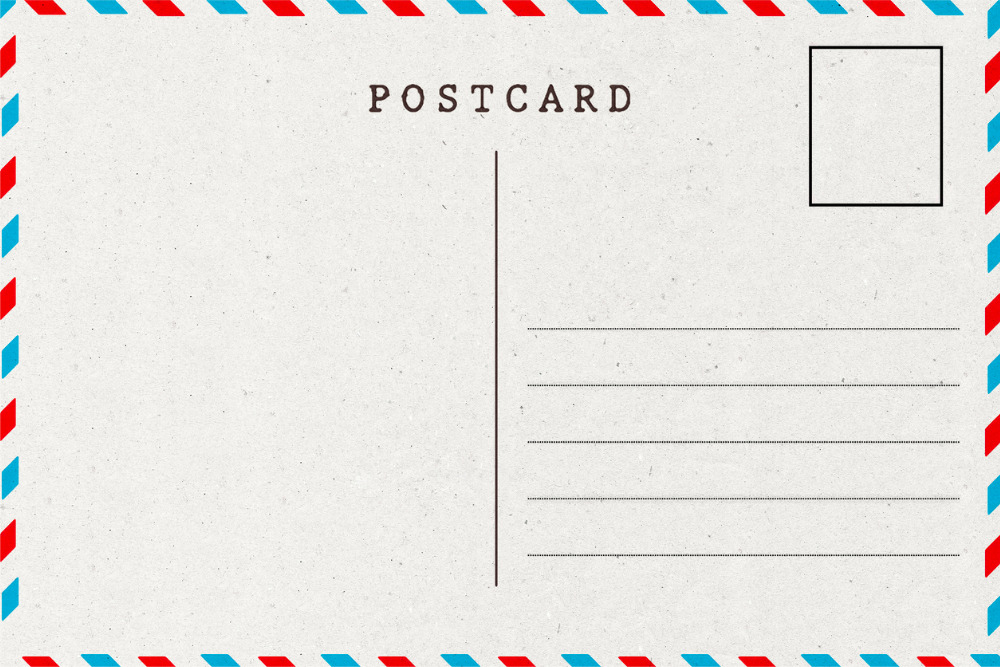Earlier this year, the world was caught off-guard by the rapid spread of the novel coronavirus…

Direct Mail Design Tips for a Better Response Rate
If you thought that direct mail was dead, you’re in for a surprise. Snail mail is still very much alive and yielding results for businesses across the country.
Here are some stats that bring that point home:
- 41 percent of Americans look forward to checking their mail every day
- The average direct mail response rate was 9 percent for house lists
- Oversized envelopes have the highest response rate
- 60 percent of recipients visit the website of the brand that sent them a catalog
- 73 percent of Americans prefer brands to communicate with them via direct mail
- Direct mail offers a 29 percent return on investment (and that number is improving)
Of course, sending direct mail to your customers is only a part of the deal. You also have to make something that prospects will want to open and respond to.
In this post, we’re going to take a deep dive into the factors that appear to influence response rates. By the end of it, you should have an understanding of how to make the best use possible of your direct mail strategy. So, without further ado, let’s begin.
1. Make Your Envelope Large AND Unique

For some time now, direct mail marketers have known that if you send somebody a large or “oversized” envelope, they’re more likely to respond.
Data suggest that large envelopes get the highest response rate at 5 percent. Postcards get a response rate of 4.25 percent and catalogs, 3.9 percent.
We argue that you can take this further by making your envelope unique too.
While a large envelope is attention-grabbing, a unique envelope takes this to the next level. We think that combining the two is a killer combination that will supersize your results.
2. Create a Prospect List Using the Right Resources
Part of any successful direct mail push is targeting your audience correctly – just as it is with any other marketing campaign. In general, it doesn’t make sense sending mail to people who would never buy from you. It’s money down the toilet.
Working out who you should send direct mail, though, is a substantial challenge. It’s not like social media, where you can target specific demographics with the click of the button. The data to do so just isn’t available (except in some unusual circumstances).
For that reason, knowing where to source prospects is one of the biggest challenges that you face. You don’t want to send out thousands of letters to people who stand zero chance of buying from you. It is a tremendous waste of your resources.
Let’s say, for instance, that you run a law firm, and you want to drum up more clients for your business. Public records and might provide you with some insight, but you’re much more likely to find willing clientele in court records.
Likewise, if you run an advertising agency, then you might want to canvas newspapers for clients. Businesses distributing commercials in print are likely to want services that allow them to advertise through other channels. And that’s where your services can help.
Recommended Read: Every Door Direct Mail for Business Explained
3. Keep Your Designs Consistent
The design of your mailer matters a lot. Estimates suggest that the average household receives 454 pieces of marketing mail every year.
It is essential that prospects can recognize which is yours and which aren’t. Customers don’t want to waste time checking every envelope that comes through their door. They want to be able to sift through mail quickly, choosing to open some and chuck the rest.
Fortunately, the solutions are simple. Putting a recognizable mark on your correspondence helps to speed up this process. The more visibility you have, the more likely you are to boost your open rates.
4. Make Your Response Coupons Bigger
We already discussed how bigger envelopes tended to get a higher response rate. Well, something similar is going on when it comes to coupons. The larger you make them, the more likely your prospects are to fill them in and send them back.
The reasons for this aren’t entirely clear. But if you’re sending them large envelopes already, it doesn’t hurt to make the call to actions big, too.
5. Sell Benefits, Not Features

Strictly speaking, this tip could refer to any form of marketing, but it is nonetheless applicable to direct mail. Put simply; firms should sell benefits, not features.
In other words, sell the sizzle, not the steak.
Consumer psychology is the driving force behind this approach. People understand their problems intimately. They know what’s wrong and what they need to solve it.
By contrast, people don’t tend to know a lot about product specifications.
Mobile phones are a great example. Beyond stating that a handset has 128 GB onboard storage, most customers don’t have a good understanding of other technical specs. Only a vanishing minority of buyers care about the type of processor that the phone uses. Most just want to know about the stuff that matters to them. Is it fast? Is it reliable? How long does the battery last? – that sort of thing.
It makes sense to use the same approach to direct marketing. Talk about the meaningful differences that your product makes to customers’ lives. Don’t immediately jump into the product details, no matter how tempting it might be. They might seem like a differentiator to you, but they’re not compelling for customers.
6. Create a Simple-To-Understand (and Tempting) Offer
In general, people don’t want you to blow up their mailboxes with spam mail. If you insist on sending correspondence in the post, they expect you to offer value.
Every piece of mail you send out, therefore, should include an offer. There needs to be a compelling reason why a person would go to the effort of filling out a coupon and sending it back to you in the post. If there’s not, then you could provoke frustration – the opposite of what you want.
The trick here is to make your customers an offer that they can’t refuse. Offer them something relevant, exciting, and beneficial to their lives. Create a situation where they’re glad that they opened the letter and decided to reply.
Furthermore, don’t make them jump with multiple hoops to get the goodies. Include a simple coupon that they can fill out and return to the sender’s address. And contact them via their preferred mode of communication, keeping them updated on the latest developments related to their response.
7. Make the Value that You’re Offering Clear
A lot of companies with excellent digital marketing campaigns get into trouble with direct mail because they don’t make their core value proposition clear.
Remember, your core value proposition is just the main problem you solve for customers.
Ideally, you should be able to sum it up in just a few words – a paragraph at most. You want the benefits you offer to be evident within seconds of opening.
Some companies include the value statement on the envelope itself for an immediate hit. Reading the letter within just fleshes out some of the details.
8. Use a Real Stamp (optional)
USPS and other postal services provide mass mailing partners, like businesses, prepaid envelopes with a printed stamp code. The mailing operation processes this code at the sorting office, verifying if the company has paid. If it has, it distributes the letter to the intended address. If it hasn’t then, then it returns it to the sender.
The problem with these markings is that customers are savvy to them. If they see one on an envelope, they know that there’s a high chance they will get a corporate message. Thus, many will discard the letter automatically, without even considering the benefit.
Using a regular stamp, however, can short-circuit this autonomic response. When people see a regular stamp, they assume that it is genuine, personal correspondence. It creates an entirely new attitude to the mail that discourages chucking it without consideration.
9. Combine Your Direct Mail With Other Marketing Efforts
When you read analyses of direct mail marketing, you invariably find that the researchers consider the method in isolation. Strictly speaking, this is the scientific approach – you want to control for as many variables as possible. But, unfortunately, that’s not how the real world works. Most businesses advertise through multiple channels.
Interestingly, data suggest that when you combine marketing methods, you can increase response rates by around 20 percent. In other words, when you use digital marketing, TV and print marketing, and direct mail together, the performance of the collective approach is higher than any individual channel.
10. Target Your Older and Younger Customers

Direct mail response rates tend to be highest among the older and the younger population. Seniors prefer this medium of communication because it is what they are used to. It reminds them of the format of the past. It’s familiar.
Younger people love direct mail too because it is so novel. For a generation that knows nothing other than text message notifications, receiving a real, physical letter is a big thing.
The middle-aged, however, are the least amenable to direct mail marketing. They’ve grown up with spam in their mailboxes for a long time, and they’re not always happy about it. Winning them over is a challenge.
Thus, if you want to increase your response rates, you might want to consider this factor. Does it make sense to target all your customers irrespective of age via mail? Or would you fare better if you sent direct mail to your young customers and use other marketing channels to approach middle-aged prospects?
11. Create a Sense Of Urgency
Creating a sense of urgency has been a marketing strategy since time immemorial. By imposing a deadline, you motivate immediate action and discourage customers from putting things off.
This tried-and-tested tactic works well in direct mail. You remind your customers that they have limited time to respond to your offer, or they’ll miss the opportunity, encouraging them to take action.
Cynics argue that this is just a psychological ploy designed to extract money from consumers. But there’s an argument which says that creating a sense of urgency actually helps people. When it comes to communicating with customers, touchpoints are rare. Unless you have an intense relationship, a client will only think about you occasionally.
It’s easy, therefore, to imagine a customer opening a letter opening your marketing mail, liking what you say, and then telling themselves that they’ll respond later. Then something distracts them, and they forget all about it.
In this situation, they could have benefitted from your product; they just didn’t feel sufficient urgency to respond there and then, so you missed the conversion opportunity.
Creating a sense of urgency is, therefore, imperative. Either use the scarcity argument, telling customers that there’s a “limited supply” or impose a deadline. Both should work.
12. Let Customers Respond To Letters Online
Tearing off the coupon, filling in the form by hand, and sending it off in the post is a massive hassle. The respondent not only has to find a pen and fill out a form but then go to the effort of going to the postbox.
Moving the response process online is, therefore, a great way to improve open rates. All you do is hand out login details in your marketing mail and tell customers they can respond using their smartphone.
Are you considering a direct mail campaign for your company? If so, you’ve made a smart choice. While many people see direct mail as old-fashioned in the digital economy, it is still a powerful tool.
Interestingly, it tends to work best when combined with other marketing approaches AND when it borrows from traditional marketing wisdom.
So, what are you waiting for? Use these tips to boost your response rate immediately and feel free to contact us with any questions you may have about direct mail!




Thank you for explaining that direct mail marketing has the best responses from the older and younger population but not the middle-aged. My friend has been thinking about direct mail marketing and has been wondering how to go about it and be effective with it. I’ll be sure to mention this to her so that she can determine if it would be effective to market only to these age groups with this method.
My friend wants to advertise his business effectively, but he’s not sure how to get attention to it. It makes sense that direct mail marketing might be worth looking into. That seems like a good way to ensure that everything is put together properly.
I appreciate that you explained the importance of planning to execute the process properly. My best friend mentioned that they’re looking for direct mailing services to assist them to speed up production in their business, and he asked if I had any suggestions. I’ll make sure to tell him, thanks to this useful post, that they should consult reputable direct mailing services for their inquiries.
My friend wants to make his business more popular. It makes sense that direct mail would be beneficial. That seems like a good way to ensure that he handles things properly.
What is best plan to maximize response for direct mail and/or email for electronic newsletter for seniors.